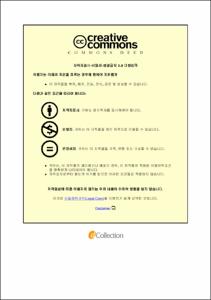화학 산업에서의 사고 보고 영향 인자에 관한 연구
- Abstract
- It has been well known about the importance of active incident reporting throughout many studies. In other words, mature incident reporting culture gives positive influences on safety culture and also leads decrease of injury accidents. However there would be a low willingness to report incidents in situations where workers feel they will be blamed for the incident, or under any negative circumstances in the organization. Therefore it is said that the effectiveness of the incident reporting scheme depends strongly on the workers’ willingness to report. Improving and promoting incident reporting requires knowledge about the elements that constitute reporting barriers. Thus, the goal of this study is to identify the factors and categories affecting incident reporting in chemical industry.
Through a literature review, preliminary site-survey and expert review, it was obtained 45 kinds of factors under 12 categories as candidates which could affect incident reporting. Then the questionnaire was finalized throughout pilot testing and validity verification of 31 questions that were converted from all candidate factors and 6 incident cases for willingness measurement. The survey was conducted to 614 employees working at A chemical company located in Korea and the responses were 520 people. Minitab was used for statistical analysis such as ANOVA, Two sample T-test, Normality tests, etc.
The test results showed that 32 out of 45 factors are significant to the willingness (at P<0.05); 8 factors in positive relationship (views on incident reporting practices, awareness on influences of incident reporting, feedback of incident reporting, reporting practices around onsite, participation in potential incident reporting, environment of working places) and 24 factors in negative relationship (incident cases reported than the assumed, 21 reasons for not reporting, experiences of being refused during the process, experiences of worrying about reporting incident). Additionally, the degree of influences of factors was ranked by QFD-HOQ method. As the result, views on incident reporting practices was the highest degree(9.3%), and reporting practices (5.7%), complex procedure (4.3%), worry about blame(4.0%) followed in the order. The studies need to be extended to other industries for more generalization of the results.
- Issued Date
- 2016
- Awarded Date
- 2016. 8
- Type
- Dissertation
- Keyword
- Incident reporting incident reporting culture factors for incident reporting barriers for not reporting willingness to report incidents.
- Publisher
- 부경대학교 산업대학원
- Affiliation
- 부경대학교 산업대학원
- Department
- 산업대학원 안전공학과
- Advisor
- 장성록
- Table Of Contents
- 제1장 서론 1
1.1. 연구 배경 및 필요성 1
1.2. 연구 목적 4
제2장 연구 대상 및 방법 5
2.1. 연구 대상 5
2.2. 연구 방법 6
2.2.1. 참고 문헌 조사 7
2.2.2. 설문 디자인(후보 영향 인자 선정) 8
2.2.3. 설문지 개발 12
2.2.4. 설문지 타당성 검토 15
2.2.5. 설문조사 실시 및 회수 16
2.2.6. 일관성 검증 18
2.2.7. Willingness 측정 19
2.2.8. 정규성 검증 21
2.2.9. 가중치 적용 23
2.2.10. 설문조사 결과 분석(가설 검정) 25
2.2.11. 영향도 분석 26
제3장 연구 결과 28
3.1. 후보 영향 인자 29
3.2. 설문지 31
3.3. 설문조사 응답 결과 33
3.4. 일관성 검증 결과 34
3.5. Willingness 분석 결과 35
3.6. 영향 인자 분석(가설 검정) 결과 38
3.7. 영향도 분석 결과 66
제4장 결론 및 고찰 70
참고문헌 75
- Degree
- Master
- Files in This Item:
-
-
Download
 화학 산업에서의 사고 보고 영향 인자에 관한 연구.pdf
기타 데이터 / 1.22 MB / Adobe PDF
화학 산업에서의 사고 보고 영향 인자에 관한 연구.pdf
기타 데이터 / 1.22 MB / Adobe PDF
-
Items in Repository are protected by copyright, with all rights reserved, unless otherwise indicated.